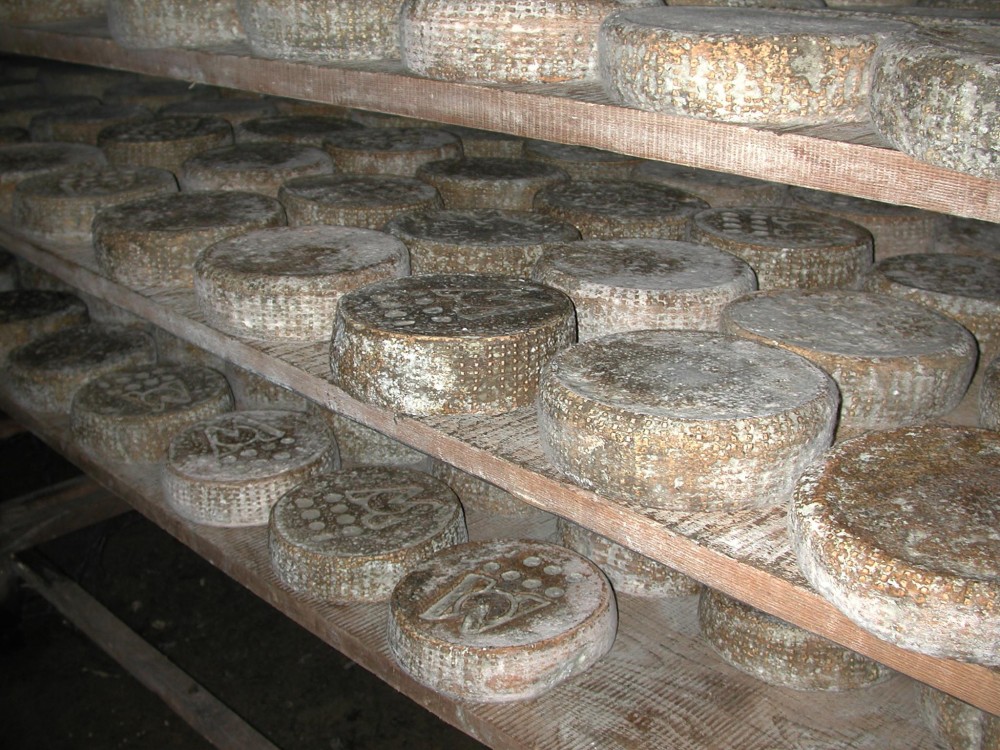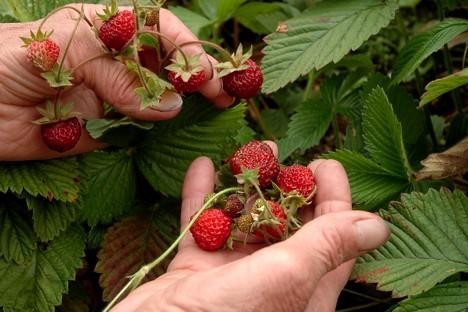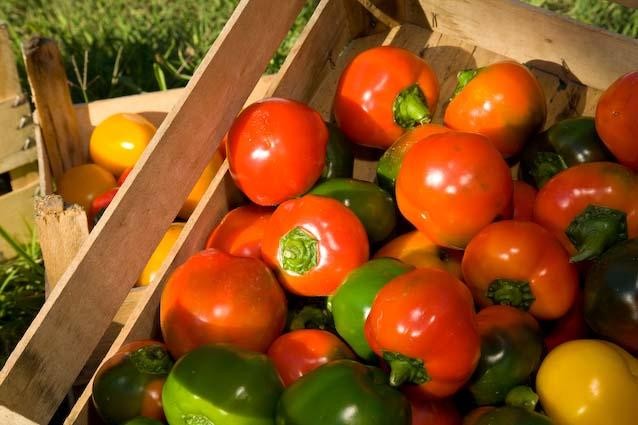Presidia Slow Food In Italy
PIEDMONT
Caprauna Turnip
Caprauna is a small village in the Upper Tanaro Valley with a few hundred inhabitants and excellent
turnips: large, very sweet and with unusual pale-yellow flesh. In the past turnips were an important
element of the local diet in the Piedmontese Alps, but were later replaced by the potato. This turnip does
not keep well once harvested; it is best left underground until ripe in the fall and winter months.
The Presidium hopes to protect its cultivation in an area currently at risk of depopulation.
Production area: Municipalities of Caprauna and Alto, Province of Cuneo
Presidium supported by: Upper Tanaro Valley Mountain Community
For information on excursions or tours for this Presidia info@bluerental.it
Capriglio Pepper
This pepper has been grown for over 100 years in the small hilly area of Capriglio d’Asti, between Asti
and Turin. Until the 1960s there was significant demand for the product in Chieri, Asti, and Turin and it
even commanded prices up to double that of other varieties. Then, with the introduction of new, largersized
varieties, the product was only grown for family consumption and a few connoisseurs. The plant is
hardy and not very tall; the pepper is of medium to small size, with three ribs and a slightly triangular or
heart-shaped cross-section. With the creation of the Presidium, the producers have formed an association,
use traditional cultivation methods and follow organic principles. They have reduced environmental impact
and are keen to reintroduce this delicious vegetable to the local market.
Production Area: municipality of Capriglio d’Asti (province of Asti)
Presidium supported by: Marcopolo Environmental Group
For information on excursions or tours for this Presidia info@bluerental.it
Carmagnola Gray Rabbit
The Carmagnola gray rabbit is the only native Piedmontese rabbit breed still in existence. Although it was
quite popular up to the end of the 1950s, later it practically disappeared until the recent genetic recovery
work done by the University of Turin. The rabbit’s medium size, long body and muscular haunches make
for a good yield of meat. Its bone structure is very fine with a muscle mass superior to that of other
breeds. The meat is whitish in color, fine, tender
and flavorful.
Production area: Municipality of Carmagnola and surroundings, Province of Turin
Presidium supported by: Piedmontese Blonde Hen, Saluzzo White Hen and Carmagnola Gray Rabbit
Consortium
For information on excursions or tours for this Presidia info@bluerental.it
Carmagnola Ox-Horn Pepper
This pepper comes in splendid colors ranging from intense yellow to bright red. Its curious long and
tapered shape (over 20 centimeters long) has three or four lobes. Reminiscent of the Spagnolìn, the first
oblong pepper to arrive from the Americas, the Carmagnola ox-horn pepper has a sweet flavor and a
thick, fleshy pulp, which improves when conserved. The pepper can be eaten raw, roasted or grilled,
bagnà ‘nt l’euil (with extra-virgin olive oil) or with bagna cauda.
Production area: Municipality of Carmagnola and surroundings, Province of Turin
Presidium supported by: Province of Turin
For information on excursions or tours for this Presidia info@bluerental.it
Coazze Cevrin
Some call it Toma, some call it Robiola, but in local dialect its name is Cevrin. This round cheese,
produced from a mix of cow’s and goat’s milk, has a thickly ridged, moist rind, deep amber-yellow in
color. Though the paste of the cheese near the rind is a pale yellow, the interior is pure white. Aged
Cevrin has an intense and long-lasting flavor. The primary aromas are musky, with notes of dry wood and
freshly cut grass. The cheese has a long-lasting flavor of hazelnut, butter and, at times, a lingering
spiciness.
Production area: Coazze and Giaveno, Sangone Valley, Province of Turin
Presidium supported by: Province of Turin
For information on excursions or tours for this Presidia info@bluerental.it
Cortereggio Canavese Piattella Bean
The Piattella is a large white bean with thin skin and characteristic flattened kidney shape. It is traditionally
sown together with corn, and as the two plants grow the bean is supported by twisting round the corn’s
robust stalks. The Piattella was still widely grown in the area in the 1980s, where it was also known as the
San Giorgio Canavese Piattella after the region’s main municipality. However, it was more commonly
called the fasol at cutres across the Canavese area: simply the Cortereggio bean. The Presidium aims to
revive and promote the tradition of growing this bean, extending collaboration with local growers and
working with other local bodies to boost the tourism and food and wine potential of this part of the
Canavese.
Production Area:
Municipality of San Giorgio Canavese, in particular the area around Cortereggio (Province of Turin).
For information on excursions or tours for this Presidia info@bluerental.it
Garbagna Bella Cherry
The Garbagna Bella cherry was almost completely abandoned over the last two decades because of its
poor resistance to humidity. It is the classic ciresa (Piedmontese for “cherry”) for preserving whole in
spirits. Sweet and crisp, it keeps its shape, texture and flavor well in alcohol. The cherries are also
excellent as fillings for Boeri chocolates, in jams, as a base for liqueurs or with cinnamon and cloves as an
unusual but delicious accompaniment to serve with meat.
Production area: Municipality of Garbagna, Grue Valley, Province of Alessandria
Presidium supported by: Curone, Grue and Ossona Valleys Mountain Community, Municipality of
Garbagna
For information on excursions or tours for this Presidia info@bluerental.it
Gavi Testa in Cassetta
Testa in Cassetta is a typical cured meat made in the winter from pig’s head, tongue, lean meat and beef
heart. These are boiled together, then the head is finely chopped several times until it becomes a paste
while the other meat is diced. These are then mixed with salt, spices and chili pepper as well as pine nuts
and rum before being stuffed into a cow’s intestine and left to rest for a day in a very cold place.
Production area: Municipality of Gavi, Province of Alessandria
For information on excursions or tours for this Presidia info@bluerental.it
Heritage Piedmontese Apple Varieties
At the start of the last century, thousands of apple varieties were still being cultivated in Piedmont. Since
then the development of industrial agriculture has made a cruel selection, with the market preferring
foreign apple varieties – bigger, prettier and better adapted to modern cultivation techniques. This
Presidium is working to save varieties such as Grigia di Torriana, Buras, Runsè, Magnana, Dominici, Carla
and Calvilla, all delicious, aromatic and hardy varieties that can have a future, even on today’s market.
Production area: Municipalities of Bibiana, Pinerolo, Cavour, Bricherasio and Osasco, Province of Turin;
Municipalities of Verzuolo, Piasco and Caraglio, Province of Cuneo
Presidium supported by: Province of Turin, Pellice Valley Mountain Community
For information on excursions or tours for this Presidia info@bluerental.it
Langhe Sheep Tuma
In 1950, there were over 45,000 native Langhe breed sheep, but today there are fewer than 2,500,
distributed among a few farms in the Langhe Cuneesi. This Presidium was founded to save the breed and
the traditional cheese made for centuries in the local area, called tuma d’fé
in local dialect. The small round cheeses, made with raw milk, are consumed fresh after 10-15 days, but
traditionally were also preserved in glass jars to be eaten through the winter.
Production area: Alta Langa, Province of Cuneo
For information on excursions or tours for this Presidia info@bluerental.it
Macagn
Macagn takes its name from one of the foothills of Monte Rosa. Smaller than a Piedmontese Toma, it is a
typical mountain cheese made from whole raw cow’s milk. The cheese has a compact and slightly stretchy
paste with a few small holes. It is straw-white in color when young, and tends towards golden-yellow with
aging. Produced twice a day in the summer, Macagn has a distinctive fragrance, recalling the scents of
pasture and flowers.
Production area: central and eastern Biellese Prealps, Province of Biella; Valsesia, Province of Vercelli
Presidium supported by: Mosso Valley Mountain Community, Valsessera Mountain Community, Cervo la
Bürsch Valley Mountain Community, Valsesia Mountain Community, Association for the Protection of Valli
Biellesi and Valsesia Macagn Cheese, Fondazione Cassa Risparmio di Biella, Piedmont Regional Authority
For information on excursions or tours for this Presidia info@bluerental.it
Mondovì Cornmeal Biscuits
Presidium cornmeal biscuits (paste di meliga) are made according to tradition using a mixture of wheat
flour and cornmeal, butter, fresh eggs and sugar. The dough is kneaded into round, oblong or crescent
shapes. Yellow and crunchy, these biscuits melt in the mouth without being greasy or cloying, leaving a
lingering toasted flavor. The stone-ground corn gives the biscuits a pleasant graininess.
Production area: Monregalese Municipalities, Province of Cuneo
Presidium supported by: Consortium for the Protection and Promotion of Monregalese Cornmeal Biscuits
For information on excursions or tours for this Presidia info@bluerental.it
Montébore
Montébore is produced in and around a town of the same name near Tortona. Documentation of this
cheese dates as far back as the 15th century. Its shape is reminiscent of a tiny wedding cake, with tiers of
decreasing size, one atop the other. Legend has it that the shape was modeled on an ancient tower in the
town of Montébore. The cheese is made from raw milk, 75% cow and 25% sheep. It has a strong milky
and buttery flavor with lingering notes of chestnut and herbs and can be eaten fresh, slightly aged or
grated.
Production area: Municipalities in the Curone and Borbera valleys, Province of Alessandria
For information on excursions or tours for this Presidia info@bluerental.it
Bronda Valley Ramassin
Whether it is called ramassin, dalmasin or darmasin, many people in Piedmont are familiar with this small,
dark and very sweet plum. However it is relatively unknown in other regions of Italy. In July, when the
delicate fruits are ripe, they fall into the nets and are hand-picked. Ramassin are cultivated in other fruitgrowing
areas of Piedmont, but the best plums come from the Bronda Valley, a few kilometers from
Saluzzo, thanks to its special microclimate and hilly terrain.
Production area: Bronda and Po valleys, Province of Cuneo
Presidium supported by: Ortofruit Italia, Municipalities of Castellar, Pagno and Brondello
For information on excursions or tours for this Presidia info@bluerental.it
Morozzo Capon
In Morozzo, capons (castrated roosters) are traditionally of the Piedmontese Blonde breed, and when
they are mature they have a long black metallic tail and glossy brick-red feathers trimmed with blue or
green. They can be recognized by their lack of crest and wattle. Women are in charge of preparing the
capons since the operation requires deft, skilled hands. The Morozzo capon has soft, tender and delicate
meat. Purists prefer it boiled and dipped in salt, although it is also used in savory pies or stuffed.
Production area: Municipality of Morozzo and surrounding areas, Province of Cuneo
Presidium supported by: Municipality of Morozzo, Consortium for the Promotion of Morozzo Capon and
Other Traditional Fowls
For information on excursions or tours for this Presidia info@bluerental.it
Mountain Castelmagno
In 1277, the herders of Castelmagno paid the rent for their pastures to the Marquis of Saluzzo in cheese.
Today, the Castelmagno found on the market is made primarily in dairies, but there are still several
farmers who produce it in the mountains according to traditional methods. The complex and ancient
technique calls for the curd to be broken into large walnut-sized lumps which are then tied up in a cloth
and left to hang before being cut again into cubes, crumbled into fine pieces, mixed with coarse salt and
put into molds.
Production area: Municipality of Castelmagno, Province of Cuneo
For information on excursions or tours for this Presidia info@bluerental.it
Nizza Monferrato Hunchback Cardoon
Cultivated in the sandy soil along the Belbo River, these cardoons are trained into a unique “hunchback”
shape. Once the plants are tall and vigorous, the cardaroli, or cardoon growers, bend the plants over
and cover them with soil. As they seek to find sunlight, the plants swell and curve and the stems lose all
their chlorophyll, becoming white and tender. The Nizza Monferrato hunchback cardoon is the only
cardoon that can be eaten raw, and is an classic accompaniment to one of Piedmont’s greatest dishes,
bagna cauda, a warm sauce of olive oil, garlic and anchovies.
Production area: Nizza Monferrato and surroundings, Province of Asti
Presidium supported by: Asti Provincial Authority, Municipality of Nizza Monferrato, Nizza Monferrato
Regional Enoteca
For information on excursions or tours for this Presidia info@bluerental.it
Orbassano Red Celery
The story of red celery begins with the introduction of a purple celery from France in the 17th century
which gradually acclimatized to the environment in market gardens near Turin. With its distinctive red
base and almond flavor, it was a common product at vegetable markets in Turin and nearby until after
Second World War. It was then abandoned and risked disappearing due to its demanding cultivation
requirements and lower profitability compared to other varieties. Now only a few growers in the area
between Stupinigi and Orbassano continue to produce it, and sell at the farm or local markets. They also
organize a special event on the third Sunday of October.
Production Area: municipality of Orbassano (province of Torino)
Presidium supported by: Municipality of Orbassano, Centro Commerciale Naturale of Orbassano
For information on excursions or tours for this Presidia info@bluerental.it
Piedmontese Blonde Hen and Saluzzo White Hen
The Piedmontese blonde hen has golden-tan plumage, a tall black tail with metallic highlights, a yellow
beak and a well-developed crest. The Saluzzo white is similar but with white plumage. Presidium breeders
adhere to a strict protocol that specifies natural feed and space outdoors for each bird. In Piedmontese
osterias, chicken is traditionally cooked alla cacciatora with onions and chopped tomatoes. The meat is
also excellent boiled in its own stock, in aspic or in a salad.
Production area: Areas of the provinces of Cuneo, Asti and Turin
Presidium supported by: Piedmontese Blonde Hen, Saluzzo White Hen and Carmagnola Gray Rabbit
Consortium
For information on excursions or tours for this Presidia info@bluerental.it
Piedmontese Cattle
Like all heritage breed oxen with white coats, this is a very ancient breed. It was only in 1886, however, that
spontaneous variation led to the birth of a bull with huge haunches and extremely muscular thighs. This was the
progenitor of the Piedmontese vitello della coscia, “veal of the thigh.” At the start of the 20th century, there
were still 680,000 animals, but today that number has been halved. Piedmontese beef is unique as it has a
perfect amount of intramuscular fat to make it lean but still flavorful. Traditionally the beef is chopped by hand
and eaten raw, seasoned only with extra-virgin olive oil, salt
and a pinch of pepper.
Production area: Province of Cuneo
For information on excursions or tours for this Presidia info@bluerental.it
Ceresole Tench
A relative of the carp, barbel, chub and bleak, this tench has a rounded back and golden skin, hence the
name gobba dorata, or “golden humped.” It has long been raised in the ponds of Pianalto di Poirino, where
man-made lakes have existed since the 13th century. Soft and flavorful without the earthy flavor often typical
of poor-quality farmed fish, the Presidium tench is an important ingredient in the typical cuisine of the Roero.
It is classically prepared in carpione (fried, then marinated in vinegar).
Production area: Municipality of Ceresole d'Alba, province of Cuneo
For information on excursions or tours for this Presidia info@bluerental.it
Roccaverano Robiola
Roccaverano cheese, made in the steep, fallow Langa Astigiana hills, is Italy’s only historic DOP goat’s
cheese. The Presidium cheese is made exclusively from raw goat’s milk. Each Robiola has its own unique
flavor: flowers, herbs and pasture microflora give each cheese a distinct personality. The cheese will
typically have aromas of yogurt, fresh grass and hazelnut, a flavor enriched by spicy, mossy nuances and
a long aftertaste.
Production area: Langa Astigiana, Province of Asti
For information on excursions or tours for this Presidia info@bluerental.it






